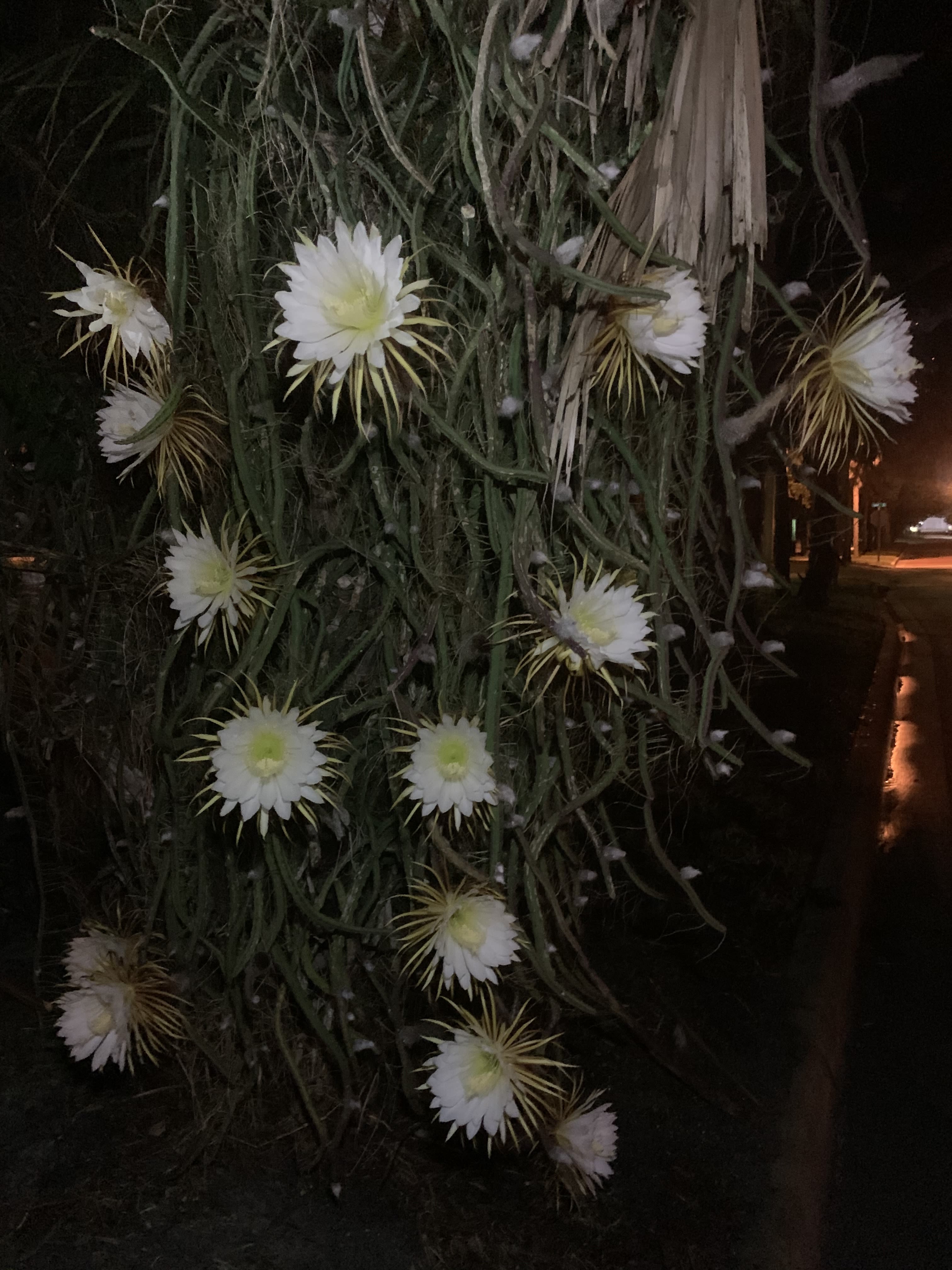We Saw the Elusive Night-Blooming Cereus Last Weekend
The flower blooms at midnight only once a year, and I promised myself I wouldn’t miss it this time. Every night for a week I checked a pair of palm trees near Payne Park in downtown Sarasota that are covered with Selenicereus grandiflorus, (aka Queen of the Night, aka night-blooming cereus) to look for the cantaloupe-sized cactus flowers that appear only in darkness, disappear with the first bits of morning sun and don’t reappear until next year.
The cactus is not indigenous to Florida, but its good looks make it easy to forgive that it’s taken up residency. I see it all around town. It comes from the deserts of Mexico and Central America and the jungles of the Antilles. It seems to prefer palm trees. (Probably easier to hold onto.) It’s an epiphyte, so it needs to grow on the surface of another plant—harmlessly, I’m told. The cactus grows into segmented stems less than an inch in diameter and wraps so thickly around the trees at the park that it doubles their girth.
Days before it blooms the crimson buds jut out from the stems. The buds look like something out of a sci fi movie’s depiction of otherworldly flora. Every alien creature Hollywood comes up with already exists here on this earth in one shape or another.
The flower only blooms at night because, like most cacti, it comes from desert climates with little humidity. The heat of the day would kill the flower immediately, but the cool of the night permits intimacy with the other nocturnal creatures that help to pollinate it.
There must have been 40 flowers on Saturday night, May 23. They bloomed an incandescent white, as though their light was powered by their own occasion. They reminded me of sea anemones. The petals were thin and many and they cupped the inside of the flower like two hands making an offering. I could smell them as I approached. I read an account that describes the flower’s smell as “redolent of vanilla.” To me, they smelled like medicinal candy that someone’s immigrant grandparents brought over from the old country. You could convince me that they are full of mystical nutrients. Herbalists say that they are a valuable remedy for the heart.
I did not look for some kind of metaphor. Not everything has to mean something else. I’m sure a better writer could tell you that there’s a lesson hidden somewhere in a flower that blooms once a night per year. Perhaps you could look at its annual blossoming for certainty in uncertain times. I just did my best to enjoy them.





